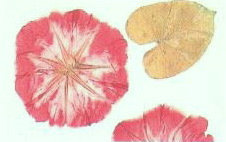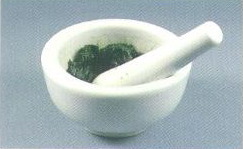
The first experimental group contains 5 leaves that were wrapped in aluminum foil for a day. The second group contains 5 leaves that all got sunshine and weren't covered up. Grind down each group.
The leaves wrapped and kept in the dark (the first group) have a lighter green color than the leaves that weren't wrapped.
|
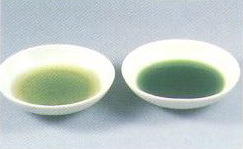
Pour a little water into the mushy paste of each group. Then pour the supernatant from each into a small dish.
The first group (the one that was covered) has a lighter color than the other group.
|
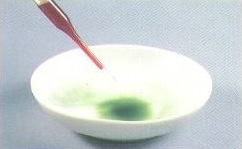
After a while, you will see something precipitating (gathering) at the bottom of the plate.
Slowly dispose of the supernatant by pouring it out. Then drop 1-2 drops of iodine-iodokalium liquid solution onto the bottom of each plate. Iodine-iodokalium liquid solution dyes starch in black.
|
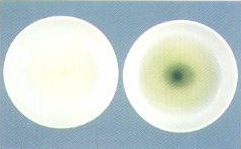
The precipitate of the second group (the group that wasn't covered) turns a little bit black.
When light shines on a leaf, the leaf uses the light to make the nourishment it needs for growth. This nourishment is called starch.
|
